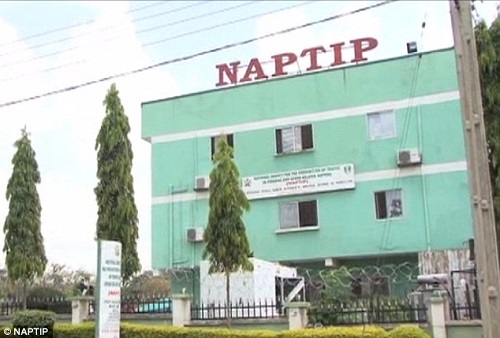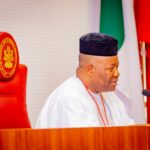
Other countries listed include Ghana, Cote d’Ivoire and India.
The Director General of NAPTIP, Prof. Fatima Waziri-Azi, disclosed this on Tuesday in Abuja, during the Inaugural Joint Technical Working Group meeting on a memorandum signed between Nigeria and The Gambia to prevent, suppress and punish trafficking in persons, especially women and children.
This was as the Country Representative of the United Nations Office on Drugs and Crime, Oliver Stober, claimed that victims of domestic trafficking have increased by 24 per cent despite concerted efforts in sub-Saharan Africa.
The PUNCH reports that the joint technical group is aimed at strengthening cooperation between Nigeria and The Gambia to facilitate information sharing to aid operational success and develop joint strategies to control trafficking in persons between the countries through the development of all collective guidelines and joint coordinated counter-trafficking interventions.
Waziri, speaking during her opening address, said people trafficked were primarily subjected to illegal enterprise sexual exploitation, labour exploitation, and domestic servitude, adding that as an agency mandated to tackle the scourge of trafficking in person, the MOU set parameters for the prosecution, protection, as well as repatriation, rehabilitation and reintegration of victims.
According to her, a country’s ability to combat human trafficking effectively translates into a global response to reduce crimes in general.
She said, “Since the execution of the MOU, NAPTIP in collaboration with our Ministry of Foreign Affairs, and the National Intelligence Agency has successfully rescued and repatriated a number of Nigerian victims. Six victims have been rescued and repatriated and 10 victims have been rescued and awaiting repatriation. Two suspects have been arrested in The Gambia and there are two ongoing investigations.
“Top countries where Nigerians are trafficked in order of scale include Libya, United Arab Emirates, Ghana, Côte d’Ivoire, and India. In 2022, as an agency, we received 1,440 reported cases, 412 were external trafficking cases, and 1,028 were internal trafficking cases. We rescued and received 2,743 victims, out of which 1,454 were female adults, 688 female children, 363 male adults and 233 male children.
“Victims of human trafficking were 45, returned victims from outside Nigeria were 251 and intercepted victims from various border points were 1,484. Top on the list for trafficking in persons was sexual exploitation, followed by labour exploitation, and domestic servitude.
“As a country, we have scaled our efforts to tackle this crime through our five broad strategic approaches of prevention, protection, prosecution, partnership and policy.”
She further stressed the need for a legal framework that will hasten the convictions of perpetrators, who operate with highly-connected networks.
Speaking also during the meeting, the Executive Director of The Gambia National Agency Against Trafficking in Persons, Isatou Dabo, highlighted the importance of collaboration as a means to enhance our capacity and strengthen efforts to prevent human trafficking in Africa.
“This MOU is an important step towards our concerted efforts in combating human trafficking between Nigeria and The Gambia. The collaboration is important because it will enable us to enhance our capacities and strengthen our efforts in the fight against the trafficking of persons. We believe the partnership will bring about groundbreaking impacts.”





